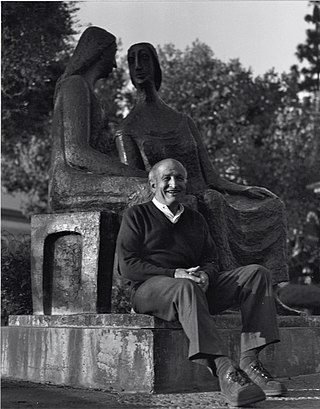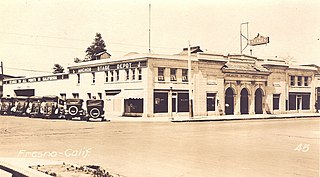
Fresno is a major city in the San Joaquin Valley of California, United States. It is the county seat of Fresno County and the largest city in the greater Central Valley region. It covers about 115 square miles (300 km2) and had a population of 542,107 as of the 2020 Census, making it the fifth-most populous city in California, the most populous inland city in California, and the 34th-most populous city in the nation.

The Children’s Museum of Manhattan is located on the Upper West Side of Manhattan in New York City. It was founded by Bette Korman, under the name GAME, in 1973. The museum became the Children’s Museum of Manhattan in the 1980s and moved to its current location on West 83rd Street in 1989. In 2018, the museum announced a plan to relocate to a larger space on 96th Street and Central Park West.

San Joaquin College of Law (SJCL) is a private law school in Clovis, California.

The MIT Museum, founded in 1971, is located at the Massachusetts Institute of Technology in Cambridge, Massachusetts. It hosts collections of holography, technology-related artworks, artificial intelligence, architecture, robotics, maritime history, and the history of MIT. Its holography collection of 1800 pieces is the largest in the world, though only a few selections from it are usually exhibited. As of 2023, works by the kinetic artist Arthur Ganson are the largest long-running displays. There is a regular program of temporary special exhibitions, often on the intersections of art and technology.

The Nancy Cantor Warehouse, or simply The Warehouse, is a former storage warehouse of the Syracuse-based Dunk and Bright Furniture Company in Downtown Syracuse, New York, United States. It is owned and utilized by Syracuse University.
San Joaquin Valley College (SJVC) is a private for-profit college with locations in California and an online division. SJVC was founded in 1977 by Robert and Shirley Perry. The college offers certificates, Associate of Science degrees, and continuing education opportunities in the medical, dental, veterinary, criminal justice, and industrial trade fields.

The Santa Fe Passenger Depot, also known as Fresno station, is an historic railroad station and transportation hub in downtown Fresno, California. It is served by San Joaquins inter-city passenger trains, Greyhound inter-city buses, and regional transit services including Fresno Area Express and the Fresno County Rural Transit Agency.

Kidspace Children's Museum is a children's museum in Pasadena, California. It is located next to the Rose Bowl, in the former Fannie E. Morrison Horticultural Center.

The House of Charm is a historic museum building in Balboa Park, San Diego. It was built for the 1915–16 Panama-California Exposition, and like most buildings from that Exposition it features Mission Revival Style architecture. It acquired its current name, "House of Charm", during the park's second Exposition held in from 1935 to 36. It now houses the San Diego Art Institute and the Mingei International Museum as well as rehearsal space for the Old Globe Theatre. It is listed on the National Register of Historic Places.

The Exploratorium is a museum of science, technology, and arts in San Francisco, California. Founded by physicist and educator Frank Oppenheimer in 1969, the museum was originally located in the Palace of Fine Arts, and was relocated in 2013 to Piers 15 and 17 on San Francisco's waterfront.

Fort Miller, also known as Camp Barbour, was a fort on the south bank of the San Joaquin River in what is now Fresno County, California. It lay at an elevation of 561 feet. The site is now under Millerton Lake, formed by the Friant Dam in 1944. It is registered as California Historical Landmark #584.

Clement Renzi was an American sculptor whose figurative bronze and terra cotta works depict people, human relationships, animals, and birds. His work has been popular with collectors in California's Central Valley and is placed in more than 60 public venues, primarily in that region.

The Fresno Bee Building is a historic 5-story building located at Van Ness and Calaveras Street in downtown Fresno, California. It was built in 1922 by architect Leonard F. Starks to house the offices and printery for The Fresno Bee newspaper.

Arthur Dyson is an American architect.

The Fresno Art Museum is an art museum in Fresno, California. The museum's collection includes contemporary art, modern art, Mexican and Mexican-American art, and Pre-Columbian sculpture.
NIU College of Visual and Performing Arts is composed of three schools. The college also administers several university programs including, the NIU Art Museum, the NIU Community School of Arts, and NIU Huskie Marching Band.

California Health Sciences University (CHSU) is a private, for-profit university located in Clovis, California. Founded in 2012, the school operates three academic programs, two of which offer doctoral degrees (in pharmacy and osteopathic medicine), and the third offers a masters degree in science. Graduates of the College of Pharmacy (COP) will receive the Doctor of Pharmacy (Pharm D) degree, graduates of the College of Osteopathic Medicine (COM) will receive the Doctor of Osteopathic Medicine (DO) degree, and graduates of the College of Biosciences and Health Professions (CBHP) will receive the Masters of Science in Biomedical Sciences (MSBS) degree.

The Peerless Building, at 1755 Broadway Street in Fresno, California, was built in 1935. Originally built for pump manufacturing, sales and service, it was renovated and reopened 2018 as a mixed-use commercial space.

The Rusitigian Building, at Fulton and Mono Streets in Fresno, California, was built in 1920 in Classical Revival style architecture. Originally built as a bus depot, it was renovated and reopened 2019 for retail and restaurant tenants. It is listed as a historic place by Fresno's Local Register of Historic Resources.





















